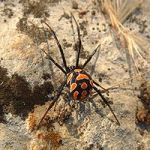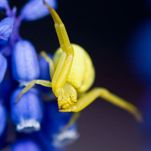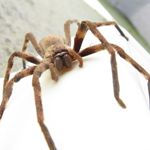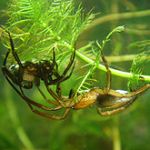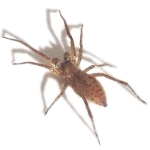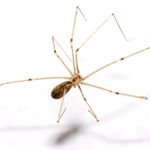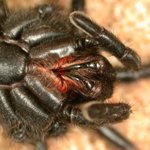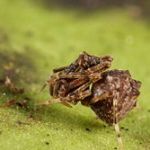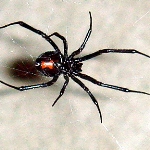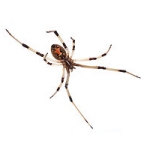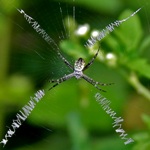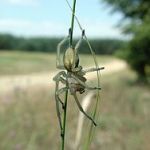Spiders are air-breathing arthropods that have eight legs, and chelicerae with fangs that inject venom.
Spiders are found worldwide on every continent except for Antarctica and have become established in nearly every habitat with the exception of air and sea colonization.
Spiders build webs made from silk produced in special glands. Spider webs vary widely in size, shape and the amount of sticky thread used. The silk thread are very thin, light and strong. spiders spin webs mainly to catch other insects as prey.
Silk is mainly composed of a protein very similar to that used in insect silk. It is initially a liquid and hardens not by exposure to air but as a result of being drawn out, which changes the internal structure of the protein.
Different types of spider webs
- Spiral orb webs
- Tangle webs or cobwebs
- Funnel webs
- Tubular webs
- Sheet webs
- Dome or tent webs
Spiders occur in a large range of sizes. The smallest, Patu digua from Colombia, is less than 0.37 mm in body length. The largest and heaviest spiders occur among tarantulas, which can have body lengths up to 90 mm and leg spans up to 250 mm
Most spiders have four pairs of eyes. More types of spiders are listed below.
Wolf Spider
Table of Contents
The wolf spider is a ground spider and does not make webs to catch prey.
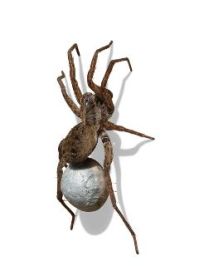
Wolf spiders do not build webs so the females carry the egg sac on their hind end. They continue to carry the newly hatched on their back for the first few weeks of life.
There are many genera of wolf spiders, ranging in body size from less than 1 to 30 millimeters.
Carolina wolf spider is the largest species of wolf spiders, with a body that can be more than one inch long.
They have eight eyes arranged in three rows. The bottom row consists of four small eyes, the middle row has two very large eyes, and the top row has two medium-sized eyes.
There are many smaller wolf spiders. They live on pastures and fields and are an important natural control of harmful insects.
Jumping Spider
Jumping Spider is an active hunter and can cover an amazing distance when jumping. It belongs to the largest group of spiders which is composed of more than 5000 known species
Jumping spider is brightly-colored and have usually patterned bodies. They grow to a length of fewer than two centimeters and females are larger than the males. Jumping spiders have stout bodies, four pairs of shorts and long legs and no antennae. They have four pairs of eyes arranged in rows.
Jumping spider feed on flower nectar or dead animals, depending on the species. Weaver Ant
Jumping spiders live in a wide variety of habitats. Most species live in tropical forests, but some are also found in a temperate forest, deserts, intertidal zones, mountains, rainforest, and scrublands.
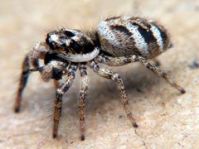
Jumping spiders fasten silk threads when they move from one place to another.
Ant mimicking jumping spiders look like ants in shape and color, they have a head, thorax, and abdomen with long, slender legs, just like ants. Ant mimicking jumping spiders raise their front legs in the air to give the appearance of antennae. Thus these spiders trick ants into becoming their prey. By mimicking ants they also protect themselves from birds, wasps and other predators who generally avoid eating ants.
The green jumping spider is large, beautiful spiders. the males are bright green and with a dark red head and white abdomen with two dark lines.
Zebra spider is a tiny jumping spider with a black body and white hairs, forming zebra-like stripes.
Tarantula
Tarantulas are large, hairy spiders that get their names from Taranto a town in southern Italy.
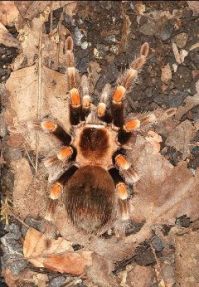 There are about 900 species identified. Tarantulas are harmless to human beings. their bites being slightly painful and contain mild venom.
There are about 900 species identified. Tarantulas are harmless to human beings. their bites being slightly painful and contain mild venom.
All tarantulas can produce silk.
Tarantulas mainly eat insects and other arthropods, using ambush as their primary method of prey capture.
The biggest tarantulas can kill animals as large as lizards, mice, and birds.
The largest species of tarantula can weigh over 85 grams. The largest of all, the Goliath Birdeater from Venezuela and Brazil, have been reported to have a weight of 150 grams and a leg-span of up to 30 centimeters. It is considered to be the second largest spider in the world by leg-span; second to the Giant huntsman spider.
Solifuges
The solifuges also knew as camel spiders, wind scorpions, and sun spiders. The name Solifugae derives from Latin and means “those that flee from the sun”
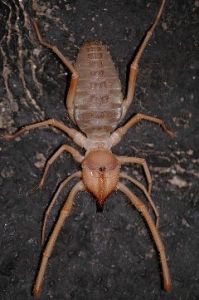
Solifugids are moderately small to large arachnids, with the larger species reaching 15 cm in length. The body is divided into a forward part, cephalothorax or prosoma, and a ten-segmented abdomen.
In some species, there are very large central eyes their eyes are surprisingly sophisticated. They can recognize forms and are used in hunting and avoiding enemies. Solifuges
Solifugae are carnivorous or omnivorous, with most species feeding on termites, darkling beetles, and other small ground-dwelling arthropods. Solifuges are opportunistic feeders and have been recorded as feeding on snakes, small lizards, and rodents
Orb-weaver spider
Orb-weaver spider is the most common group of builders of spiral wheel-shaped webs often found in gardens, fields, and forests. The orb-weavers include over 10,000 species and makeup about 25% of spider diversity.
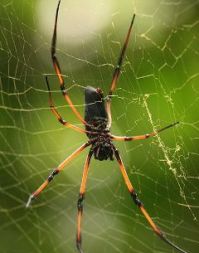
Orb-weavers have eight similar eyes, legs hairy or spiny and no stridulating organs.
Generally, orb-weaving spiders are three-clawed builders of flat webs with sticky spiral capture silk. Many orb-weavers build a new web each day. Generally, towards evening, the spider will consume the old web, rest for approximately an hour, then spin a new web in the same general location.
Bolas Spiders
Bolas Spiders are unusual orb-weaver spiders that do not spin the typical web. Instead, they hunt by using a sticky ‘capture blob’ of silk on the end of a line, known as a ‘bolas’. By swinging the bolas at flying male moths or moth flies nearby, the spider may snag its prey rather like a fisherman snagging a fish on a hook. Because of this, they are also called angling spider or fishing spider
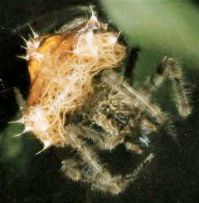 Bolas spiders are small nocturnal animals, females up to 15 mm, males about 2 mm with oddly ‘lumpy’ abdomens. Several species look like bird droppings, which enables them to rest unnoticed at a day in fairly exposed places.
Bolas spiders are small nocturnal animals, females up to 15 mm, males about 2 mm with oddly ‘lumpy’ abdomens. Several species look like bird droppings, which enables them to rest unnoticed at a day in fairly exposed places.
More Spider Images
